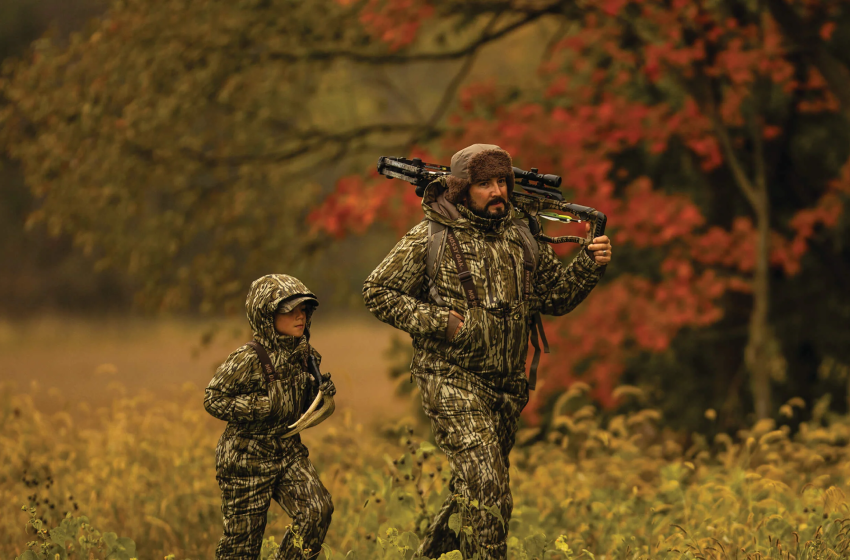Best Cold Weather Hunting Gear for Extreme Temperatures – A Complete Checklist

Cold Weather Hunting Gear
Why Cold Weather Hunting Requires Special Gear?
Hunting in extreme cold can be an exhilarating and challenging experience, but it’s not without its risks. The right gear can make the difference between a successful hunt and one that ends in discomfort or even danger. Whether you’re stalking game in the mountains or waiting in a frosty blind, you need equipment designed to keep you warm, dry, and mobile.
The Importance of Proper Gear in Extreme Cold
The Challenges of Hunting in Subzero Temperatures
Hunting in freezing conditions presents unique challenges. Your body works harder to maintain its core temperature, and without the right gear, you risk frostbite, hypothermia, or general discomfort. Cold weather hunting gear is specially designed to insulate your body while allowing you to remain agile and ready for action.
Staying Warm vs. Staying Mobile
Balancing warmth and mobility is key. Layering is the most effective strategy, allowing you to add or remove layers as your activity level changes. Too many bulky layers can restrict movement, while too few leave you vulnerable to the cold.
Base Layers: The Foundation of Warmth
Merino Wool vs. Synthetic Materials
The base layer is your first line of defense against the cold. Merino wool is a top choice because it’s breathable, moisture-wicking, and naturally odor-resistant. Synthetic materials like polyester are also great for moisture management but lack the warmth of wool.
How to Choose the Right Base Layer for Different Conditions?
For extreme cold, choose a heavyweight base layer that offers maximum insulation. For more moderate conditions, a midweight option may suffice. Always opt for moisture-wicking fabrics to keep sweat away from your skin, as wet fabric can chill your body quickly.
Insulating Layers: Staying Warm Without Overheating
Down Insulation vs. Synthetic Insulation
The insulating layer traps body heat, creating a barrier between you and the cold. Down insulation is lightweight and offers superior warmth, but it loses effectiveness when wet. Synthetic insulation, like PrimaLoft, is a good alternative, as it retains warmth even in damp conditions.
Best Insulating Jackets for Extreme Cold
Look for jackets with multiple insulation layers and features like adjustable hoods, cuffs, and hem seals to trap heat. Some of the best jackets for extreme cold include options from brands like Sitka, Patagonia, and The North Face.
Outer Layers: Protection Against Wind and Water
Importance of Waterproof and Windproof Materials
Your outer layer is crucial for protecting against wind, rain, and snow. Look for materials that are waterproof, windproof, and breathable. GORE-TEX is a popular material for its ability to repel water while allowing moisture from sweat to escape.
Best Cold Weather Hunting Jackets and Pants
Choose jackets and pants that offer full protection without restricting your movement. Brands like Sitka and Kuiu offer excellent options with reinforced knees and elbows for added durability.
Footwear: Keeping Your Feet Warm and Dry
Insulated Hunting Boots for Subzero Conditions
Cold feet can ruin any hunt. Insulated boots designed for extreme cold, like those from Muck Boot or LaCrosse, provide the warmth and waterproofing needed for long hours in the snow. Look for boots with insulation ratings of -40°F or lower.
Socks and Liners for Added Warmth
Layering socks can add extra warmth, but be careful not to over-tighten your boots, as this can cut off circulation. Merino wool socks, paired with moisture-wicking liners, are the best combination for warmth and comfort.
Hand Protection: Gloves, Mittens, and Hand Warmers
Best Gloves for Dexterity in Cold Weather
Gloves are essential for dexterity, but they must also provide warmth. Look for insulated gloves with grip-enhancing features to ensure you can handle your weapon with ease.
Mittens vs. Gloves: Which is Better?
Mittens generally provide more warmth by keeping your fingers together, but gloves offer better dexterity. Consider using a glove-mitten hybrid that combines the best of both worlds.
Head Protection: Hats, Balaclavas, and Face Masks
Importance of Keeping Your Head Warm
Heat escapes from your head more rapidly than other parts of your body, so a hat or balaclava is crucial. Windproof, insulated options offer the best protection.
Best Headgear for Extreme Cold Hunting
Choose headgear that covers your ears, face, and neck. Balaclavas are versatile and provide full-face coverage, while fleece-lined beanies can add warmth without bulk.
Staying Hydrated and Fed in Extreme Cold
Importance of Nutrition and Hydration in Cold Weather
Hunting in extreme cold requires more energy, so staying hydrated and well-fed is essential. Cold air can dehydrate you without you even noticing, so drink plenty of water and bring high-energy snacks.
Portable Meals and Thermoses for Hot Drinks
Pack easy-to-eat meals and snacks, such as energy bars, nuts, and dried fruit. A thermos filled with hot tea or soup can provide a much-needed warm-up during a cold hunt nation.
Navigating and Communicating in Harsh Conditions
GPS Devices and Maps
Having reliable navigation tools is essential in cold weather hunting. GPS devices are a must, but always carry a physical map as a backup.
Radios and Communication Gear for Hunters
Two-way radios or satellite phones ensure you can stay in contact with your hunting party. In extreme cold, communication can be a lifesaver.
Safety Gear for Extreme Cold Hunting
First Aid Kits for Hypothermia and Frostbite
A first aid kit tailored for cold weather should include supplies for treating hypothermia, frostbite, and other cold-related injuries. Heat packs and emergency blankets are vital additions.
Emergency Blankets and Heat Packs
Emergency blankets are compact and can provide life-saving warmth in case of an emergency. Heat packs can be used to warm your hands, feet, and core.
The Role of Camo in Cold Weather Hunting
Winter Camo Patterns: Blending into Snowy Terrain
In snowy conditions, winter camo patterns are essential for blending into the landscape. Look for quiet, non-reflective fabrics that won’t rustle in the cold.
Importance of Silent Gear in the Cold
Cold weather can make gear noisy as fabrics stiffen. Opt for soft, quiet materials that allow you to move stealthily.
Cold Weather Hunting Accessories
Binoculars with Anti-Fog Lenses
Cold temperatures can cause binocular lenses to fog up. Invest in high-quality, anti-fog binoculars to ensure you can spot game clearly.
Harnesses and Slings to Keep Gear Accessible
A good harness or sling system keeps your gear accessible without having to remove your gloves or open your jacket. Choose systems that are easy to use in cold conditions.
Pre-Hunt Preparations for Extreme Cold
Checking Weather Conditions
Always check the weather forecast before heading out. Know the wind chill and potential for snow or ice, and prepare accordingly.
Prepping Gear the Night Before
Lay out your gear the night before to ensure everything is in working order. Test your electronics, pack extra batteries, and make sure all your clothing is clean and dry.
Conclusion: Be Prepared for Anything in Cold Weather Hunting
Hunting in extreme cold demands the right gear, careful preparation, and a smart strategy. By layering appropriately, staying hydrated, and packing the best cold-weather hunting gear, you can enjoy a safe and successful hunt even in the harshest of conditions.









